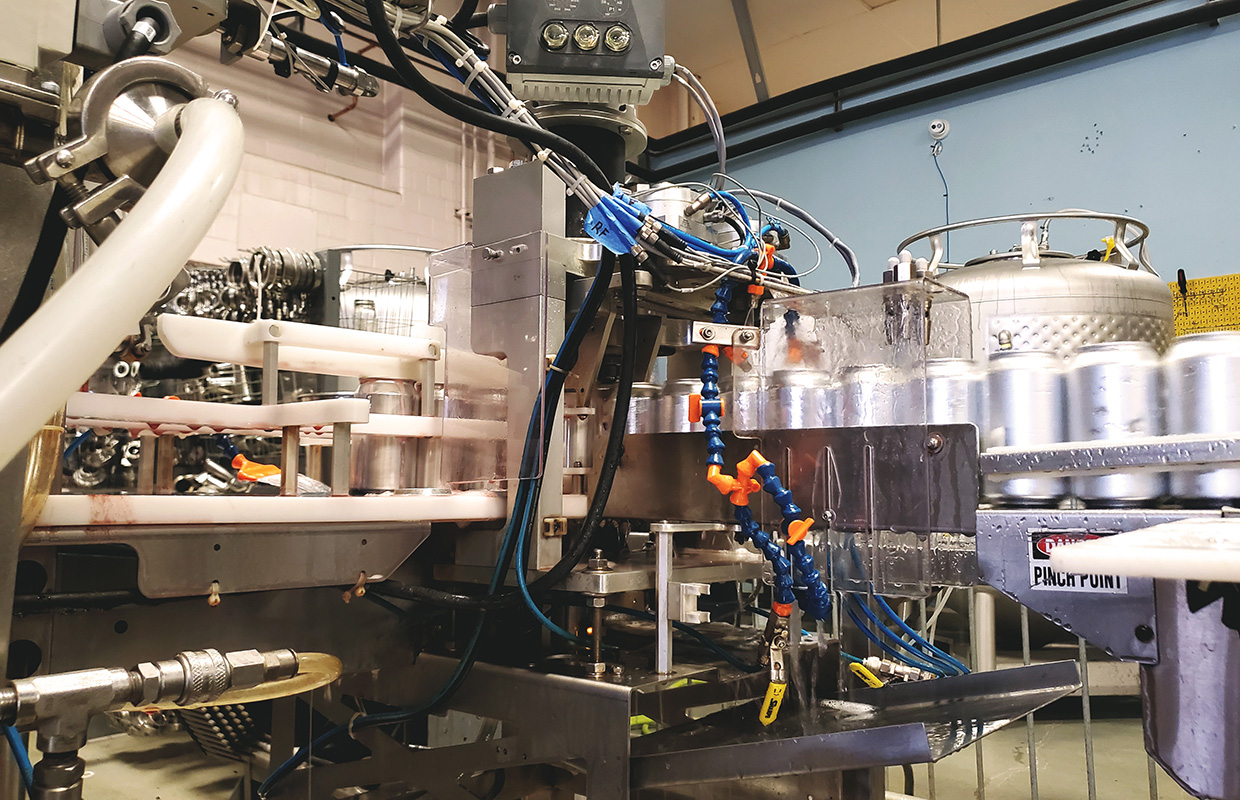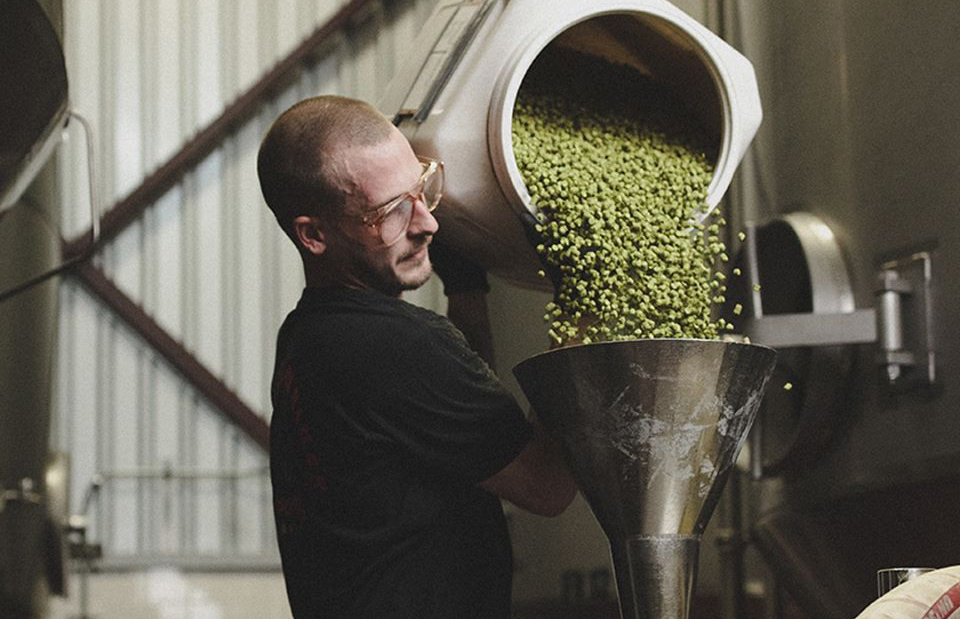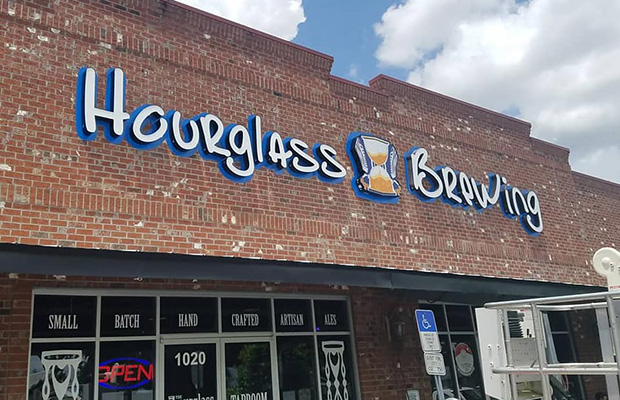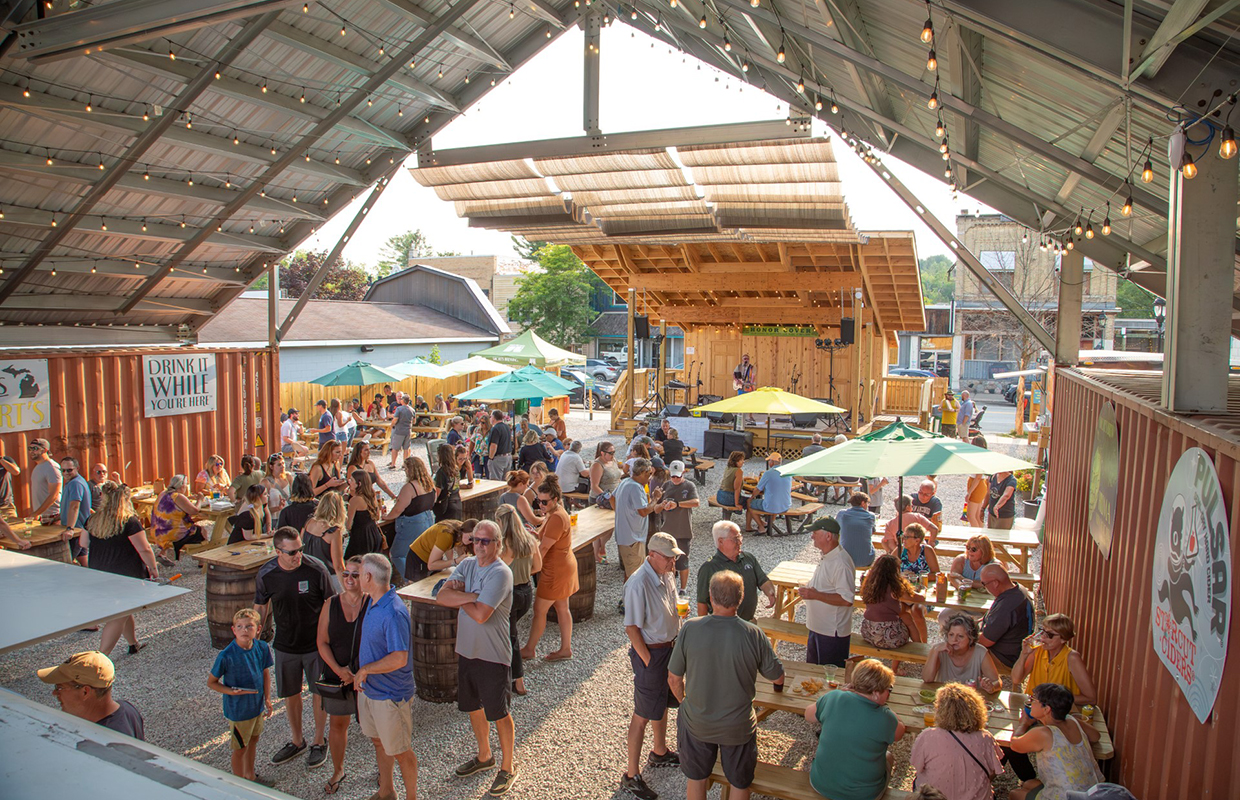
It can be a decision of cost or cost-effectiveness — it can also just come down to flexibility or even the space your brewery occupies. Making the decision to package your beer in cans means choosing to can in-house and purchase your own line for use or work with a mobile canning company and set up a schedule to work around your production schedule.
WHY TWO BROTHERS & IDLE HANDS PURCHASED CANNING LINES
Two Brothers co-founder Jason Ebel said that owning their own equipment and packaging their own product allows the Illinois brewery control of the product every step of the way.
“When we started canning, we had the capital and space available to purchase and install a canning line, so that made our decision easier,” Ebel said of the brewery that produces more than 30,000 barrels annually.
Idle Hands, which is a much smaller operation (around 1,600 barrels produced in 2020) located in Malden, Massachusetts, recently bought its first canning line since opening in 2011.
Founder and president Chris Tkach said adding the line was always in the back of his mind but the pandemic in 2020 really sped up the timeline as the Boston-area brewery lost its taproom and keg accounts and needed to get beer in a can.
“When I sit there and look at the amount of money that I’m spending on a mobile canner, it’s beyond what a loan payment is for a canning line,” Tkach said. “To us, it was a very simple business decision to bring that in-house.
“As soon as you start paying those bills, you’re like, ‘Wow, this is a lot of money that’s going out the door that I could be using for other things.’ So the way I look at it, that canning line that’s sitting there just gave us a little bit more breathing room in terms of being able to pay people’s salaries here.”
READ MORE: WHAT’S THE BEST SOLUTION FOR CAN STORAGE ISSUES?
WHY URBAN ARTIFACT CHOSE TO USE A MOBILE CANNER
Producing more than 8,000 barrels a year and growing, Bret Kollmann Baker, the Head of Brewing Operations at Urban Artifact still sees value in mobile canning services.
He said the company ultimately decided that this method was best as it has allowed the Cincinnati facility the option to move into cans when from a capital expenditure standpoint, it would not have been able to.
“We started canning at around 1,800 barrels per year, and our margins were slim,” he said. UA has renegotiated its mobile canning contract twice in that time and with our new expansion to allow for up to 15,000 BBLs per year the brewery chose to get a permanent line that will be owned and ran by the mobile company.
“We look at it like this: Why would I want to do the least favorite job in the brewery, own all that responsibility, maintenance, and then have to hire brewers to manage the line and run it every day,” Baker questioned. “It may cost you a bit more on a singular case basis, but when you look at the yearly cost of owning and running a canning line, the numbers for us didn’t start to make sense until we were pushing close to 25-30,000 barrels per year.
“Hell, there is a reason that P&G, GE, and other large manufacturers in the world contract out labor where they can.”
SO WHAT SHOULD YOU DO?
Ebel admitted that in today’s market the availability of cans is a big issue and even Two Brothers has to look at all available options.
“For instance, working with another company to package your beer might also give you access to their can contracts,” he pointed out. “Many breweries are having a hard time getting cans right now. Mobile or contract canning is also a good way to add packaging capacity in the busier months without having to commit to purchasing a line.”
Baker said to ask yourself or your management team a litany of questions such as:
- Why are you doing this?
- How does this fit into my 1-year, 3-year, and 5-year plans?
- What does this mean for my brand and my products?
Making changes to your brand is painful at the start, but Baker said it will happen and it will happen a lot early on. So when planning through how to handle your can, also think of its look and how to best use your money that way as well
“You’re going to make a lot [of changes] in the first year or two as you learn what works and doesn’t work aesthetically and for your brand,” Baker said. “So avoid printed cans for the first while. Buy just what you need — labels are cheaper than shrinks — and make slow changes and improvements.
“Once you’re happy with the look, then investigate printed cans to save some sweet, sweet margin.”




Be the first to comment